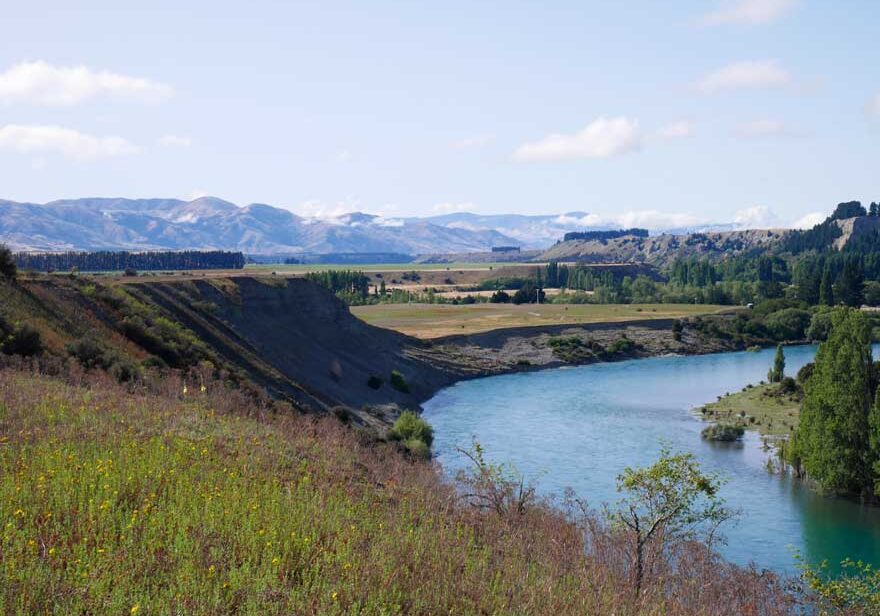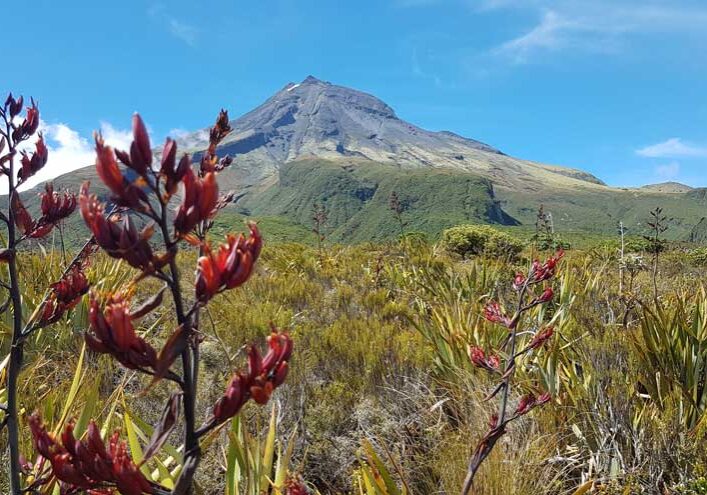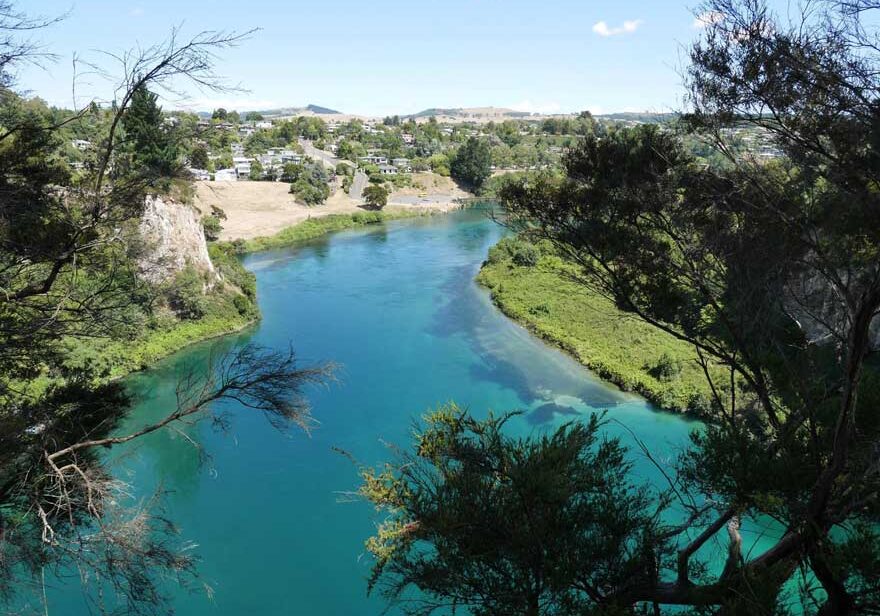Cryosphere and cold landscapes
Antarctic Geomorphology
Professor Arjen Stroeven2, Professor Jon Harbor1,2
1Purdue University, West Lafayette, United States, 2Stockholm University, Stockholm, Sweden
This session will explore earth processes shaping the Antarctic landscape and ways in which geomorphology informs reconstructions of past climate change as well as predictions of impacts of future climate change. We invite contributions from researchers studying the continent's geomorphological features, including glacial landforms, permafrost, and its unique icesheet/climate/ocean dynamics. We welcome presentations on landforms and processes in Antarctica, contributions that advance understanding of the interactions between climate change, ice flow, and earth processes, and implications for global sea-level change. Presentations might highlight recent fieldwork, satellite observations, and modelling efforts that contribute to a deeper understanding of Antarctic environmental change.
Geomorphological insights from Sub-Antarctic Islands
Professor Werner Nel1, Dr Elizabeth Rudolph2, Prof David Hedding3
1University of Fort Hare, Alice, South Africa, 2University of the Free State, Bloemfontein, South Africa, 3UNISA, Johannesburg, South Africa
The Sub-Antarctic islands, situated in the remote Southern Ocean, offer a unique geomorphological perspective due to their distinct geographical setting. These cold islands, characterized by both glacial and periglacial processes, provide crucial insights into the historical and ongoing changes in oceanic and atmospheric circulation patterns within the southern hemisphere mid-latitudes. Unlike their northern hemisphere counterparts, these islands experienced a different Last Glacial Maximum (LGM) and complex deglaciation, leading to unique geomorphological features and processes. The landforms of these islands serve as invaluable proxies for understanding landscape responses to climate change. Palaeo-climatic shifts have profoundly influenced geomorphological and cryogenic dynamics, shaping landforms and influencing ecosystem processes. Contemporary climatic changes, such as rising temperatures, moisture fluctuations, and increased frequency of extreme events, pose significant threats to these delicate geomorphological systems. These changes have the potential to push landscape and ecosystem processes beyond their existing environmental thresholds, impacting landforms and biodiversity. This session aims to explore the geomorphological significance of Sub-Antarctic islands and their role as indicators of environmental change. We invite contributions that highlight the geomorphological processes and dynamics that shape the landscape of these Sub- Antarctic Islands. Research focusing on the region's geomorphological responses to past and present climatic conditions and the possible implications for ecosystem processes are particularly welcome. Emerging researchers are encouraged to submit their work to advance our understanding of these critical sentinel landscapes.
Glacial and periglacial landscapes in a changing climate
Dr Costanza Morino1, Dr Shaun Eaves2
1University of Padova, Italy, 2Victoria University of Wellington, New Zealand
This session explores the dynamics of glacial and periglacial processes in cold regions, offering insights into both past and present climate change. Polar, sub-polar, and alpine environments serve as valuable analogues for understanding Pleistocene climate shifts and predicting future scenarios. We aim to examine glacial and permafrost landforms, sediments, and systems in cold regions worldwide, focusing on the role of climate forcing during the Quaternary and the present Anthropocene warming.
We invite contributions that investigate the responses of glacial and periglacial systems to climate change, emphasising sediment and geomorphic processes. Studies that assess present conditions, reconstruct past environments, or predict future changes are encouraged. Innovative multi-disciplinary approaches that combine field, remote sensing, laboratory, and/or modelling techniques to uncover the complex interactions between glacial and periglacial cryosphere components in cold regions are particularly welcome.
Glacial and Periglacial Processes in Mountain Regions: Past and Present
Professor Stefan Winkler1, Dr, Shelley MacDonell2,4, Dr. Giovanni Monegato3, Associate Professor Heather Purdie2
1University Of Würzburg, Würzburg, Germany, 2University of Canterbury, Christchurch, New Zealand, 3Italian National Research Council, Padova, Italy, 4Centro de Estudios Avanzados en Zonas Áridas (CEAZA), La Serena, Chile
Mountains regions are characterised by highly dynamic geomorphological processes and are hot spots of current climate change. The cryosphere constitutes an important element of mountain regions that exhibited various interactions with changing climatic conditions over time. The resulting specific glacial and periglacial landforms, sediments, and processes are frequently utilised for palaeoclimatic or palaeoglaciological studies and related modelling. Current geomorphological processes operating in alpine environments are simultaneously studied in the context of a better understanding of related mechanisms and triggers. However, considerable diversity exists between individual mountain ranges.
Our session aims to specifically explore issues resulting from mostly regionally focused studies and a high diversity of methodological approaches applied by inviting contributions from mountain regions of all different latitudes and climate zones. The temporal scope of the session will cover Pleistocene glaciations and cold periods as well as the Holocene, including present-day processes. Because of an increasing interest to explore the transitions between glacial and periglacial processes, all aspects of cold climate geomorphology are welcomed to bridge any existing gaps by stimulating discussion and promoting collaborative research. We invite contributions on all various aspects and methodological approaches of the topic. Studies that address regional and hemispheric connections are especially encouraged.
Glacial Landsystems of Southern Hemisphere Alpine Environments
Dr Jenna Sutherland1, Professor David Evans2, Professor Jonathan Carrivick3, Dr William James3, Professor James Shulmeister4
1Leeds Beckett University, Leeds, United Kingdom, 2Durham University, Durham, United Kingdom, 3University of Leeds, Leeds, United Kingdom, 4University of Canterbury, Christchurch, New Zealand
Most alpine mountainous regions of the Southern Hemisphere are rapidly deglaciating in response to global anthropogenic forcing and regional feedbacks. The latter include changes in the Southern Ocean and atmospheric circulations, both of which remain poorly understood beyond the short instrumental period. A deeper understanding of the behaviour of Southern Hemisphere glaciers helps us constrain the uncertain future trajectory of ongoing changes. However, investigations of such glaciers remain unevenly distributed in time and space. Complex glaciological conditions, geomorphological processes and tectonic activity can also make regional and intra-hemispheric correlations challenging. The glacial geomorphological record provides exceptional breadth and depth of paleoenvironmental information on the Earths past climate and on the efficiency of glaciers in landscape evolution. Traces of glacial activity across the mid- and high latitudes of the Southern Hemisphere are manifest in characteristic depositional and erosional landforms that highlight specific conditions of mountain glaciations and complex interactions. This session has a regional focus that seeks to showcase the latest research on Southern Hemisphere glacial geomorphology and stimulate discussions about the challenges and advances in understanding the sediment-landform archive via a landsystems approach. We invite contributions based on (i) modern observations of present-day glacial landforms, sediments, and processes to describe the current state, as well as (ii) Quaternary (or pre-Quaternary) reconstructions aimed at enhancing our understanding of past glacial processes. Contributions on all relevant aspects are welcomed but we particularly encourage work that presents new methods, or data from poorly investigated areas such as the Andean Cordillera, New Zealand Southern Alps, Antarctic Peninsula, and other Southern Ocean island settings. We are particularly interested in contributions that assess the various styles and geomorphological imprint of glaciations and how they may extend the associated sedimentary record beyond fragmented stratigraphical successions.
Open session on rock glaciers dynamics
Dr David Farías-Barahona1, Dr Shelley MacDonell2, Dr Sebastián Vivero3,4, Prof. Jan Blöthe5
1University of Concepcion, Concepcion, Chile, 2Waterways Centre, University of Canterbury, Christchurch, New Zealand, 3Department of Geosciences, University of Fribourg, Switzerland, 4Laboratory of Catchment Hydrology and Geomorphology, École Polytechnique Fédérale de Lausanne (EPFL), Lausanne, Switzerland, 5Institut für Umweltsozialwissenschaften und Geographie, Albert-Ludwigs-Universität Freiburg, Freiburg, Germany
Cryosphere components play a crucial role as freshwater sources for ecosystems and communities worldwide. While changes in glaciers have been extensively studied, consistently showing ongoing retreat and thinning, there remains a significant gap in research and systematic monitoring of rock glaciers. Rock glaciers are distinct landforms in mountain periglacial landscapes, serving as visible indicators of permafrost and reflecting past and present climatic and geomorphic conditions. Their dynamics are influenced by factors such as internal structure, debris accumulation, topography, as well as climatic factors like thermal and hydrological regimes. Recent studies have documented rising ground temperatures, decreasing ice content, increasing horizontal velocities, and signs of landform degradation. Moreover, our understanding of water's role remains incomplete. Despite this, rock glaciers are now widely recognized as key climate change indicators, with Rock Glacier Velocity recently included as an Essential Climate Variable for permafrost monitoring. The impacts of climate-driven permafrost degradation on rock glacier evolution are still not fully understood, emphasising the need for further research and monitoring.
In this open session, we invite the rock glacier research community to contribute findings on kinematics, regional inventories, and structural assessments to enhance understanding and predict future changes in these landforms, as well as research on potential geohazards, water resources, and climate impacts.
Permafrost and periglacial geomorphology
Dr Alena Giesche1, Dr. Eva Stephani1
1US Geological Survey, Anchorage, United States
Permafrost and periglacial environments are characterized by harsh climatic conditions and freeze-thaw processes, which are rapidly changing due to climate change. We welcome submissions related to paleoenvironmental reconstruction and geochronology, modelling future landscape changes and hazards, as well as modern studies related to permafrost monitoring and observations and permafrost mapping and remote sensing on Earth and other planets. We aim to showcase and discuss novel methods and theories in cryosphere research and cover a range of environments from the high-latitude Arctic region and Antarctica to high-elevation alpine permafrost regions.
Southern hemisphere mountains and climate change
Professor Jasper Knight1, Professor Stefan Grab1, Professor David Hedding2, Professor Juan Luis García Barriga3
1University of The Witwatersrand, Johannesburg, South Africa, 2University of South Africa, Pretoria, South Africa, 3Pontificia Universidad Católica de Chile, Santiago, Chile
Mountains in the southern hemisphere span a range of elevations and latitudes and they experience different climate regimes to those in the northern hemisphere. They also evolved differently during the late Quaternary and Holocene in response to climate and environmental changes, in terms of their glacial history, and geomorphic and ecological properties and processes. This session explores the geomorphic and climate records of southern hemisphere mountains over different time periods and from different locations. Contributions are invited that explore the varied evidence for climate and environmental conditions and change based on direct and proxy records. The focus of potential contributions to this session may include geomorphology, sedimentology, hydrology, ecology, pedology, glacial and periglacial analysis, modelling or dating, and based on mountain or high elevation locations in the southern hemisphere.
The role of paraglacial processes in the evolution of glacial landscapes
Professor Denis Mercier1, Dr Sam McColl2, Professor Colin Ballantyne3, Dr Katja Laute4
1Sorbonne Université - LGP, Paris, France, 2GNS Science, , New Zealand, 3University of St Andrews, St Andrews, UK, 4Geomorphological Field Laboratory, , Norway
Paraglacial geomorphology is the study of the ways in which nonglacial Earth-surface processes conditioned by glaciation and deglaciation affect glaciated landscapes during and after glacier retreat. Such processes affect rock slopes, sediment-mantled slopes, glacier forelands and fluvial, lacustrine and coastal landsystems. This session explores the roles played by paraglacial geomorphic processes in the shaping of glacial landscapes and landforms, and will focus on questions such as: to what extent do ‘glacial’ landscapes and landforms owe their form to glacial processes versus paraglacial processes? what contributions do paraglacial processes play in the net erosion and modification of ‘glacial’ landscapes? how do paraglacial and glacial processes interact to enhance or dampen landscape modification over glacial cycles? Over the past 50 years research on Lateglacial and Holocene landscape modification, together with studies of rapid landscape changes during recent deglaciation, have demonstrated the dominance of paraglacial processes in modifying glacial landscapes. Such processes must also have been active during previous interglacials, operating synergically with glacial erosion and deposition to contribute to long-term landscape evolution over multiple glacial cycles. In mountainous areas, for example, paraglacial rock-slope deformation and failure, reworking of sediment-mantled slopes and fluvial activity have substantially modified postglacial landscapes and landforms. Conversely, during past periods of glacier expansion, glacier ice has evacuated and remobilised paraglacial deposits in cirques, valleys, rock basins and fjords, potentially enhancing glacial erosion and associated sediment flux. Paraglacial processes are also likely to play an increasingly important role in the response of landscapes to the warmer climates we are heading towards over the next century. We warmly invite abstract submissions that address all aspects of glacial-paraglacial cycles, including paleo, modern, and anticipated future landscape changes across a broad range of contexts, and particularly those that concern the contribution of paraglacial activity to long-term modification of glaciated landscapes.



